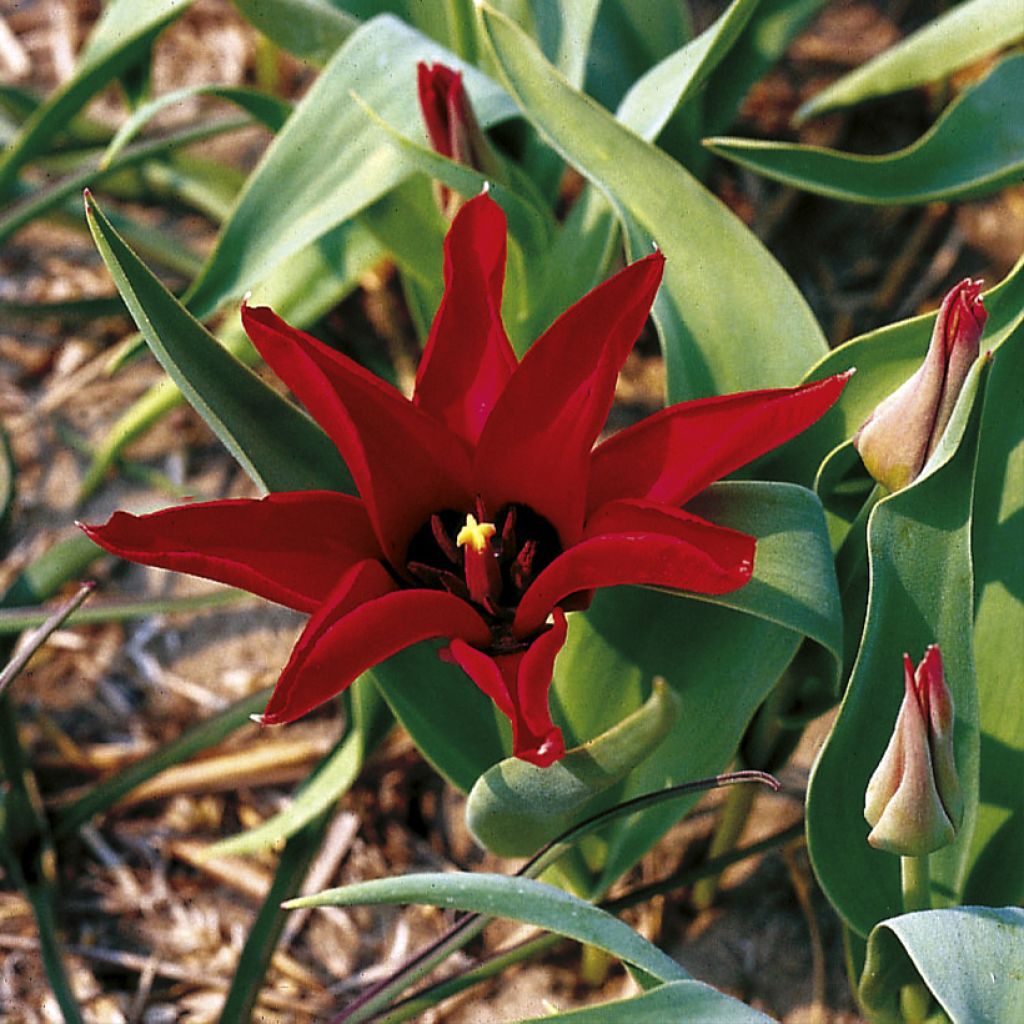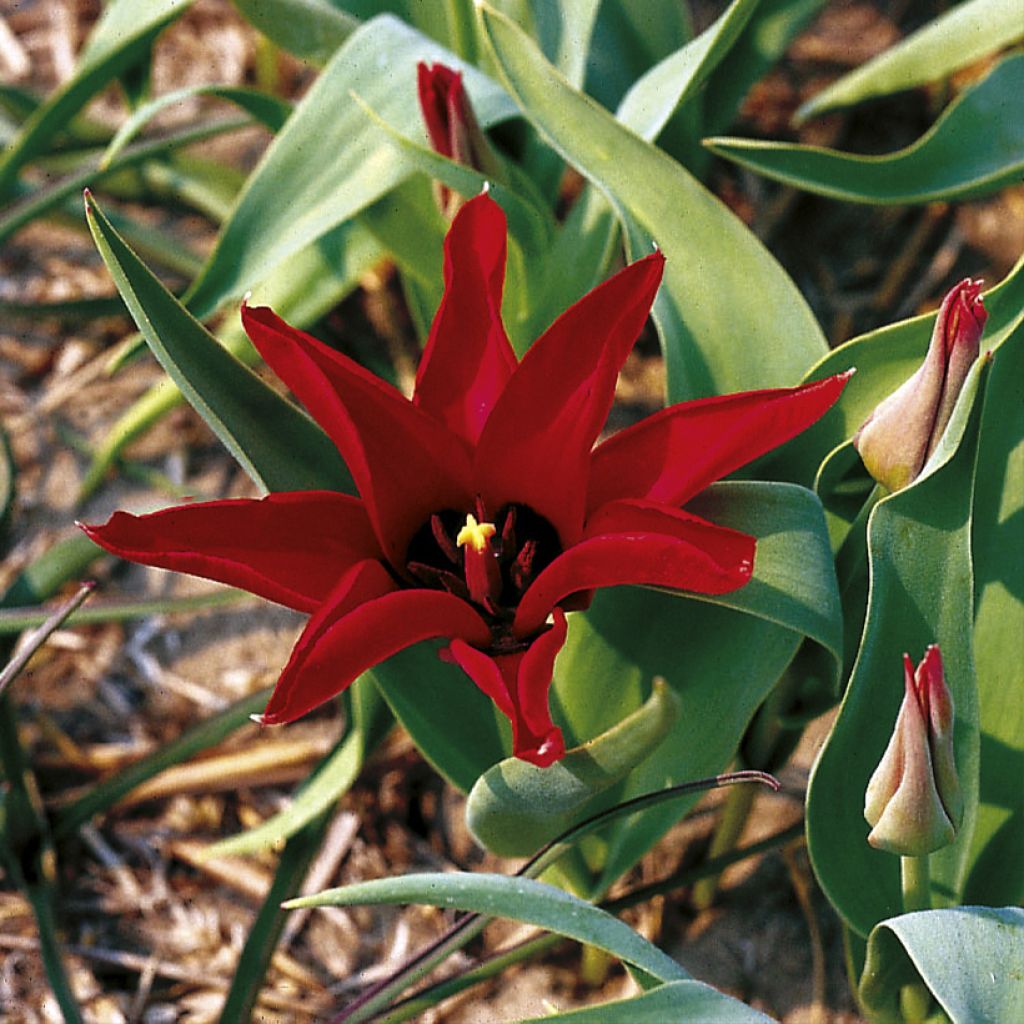Plantfit
Log in / Register
Existing customer?
New customer?
Create an account to track your orders, access our customer service and, if you wish, make the most of our upcoming offers.
My Account
Hello
Shipping country and language
Your country of residence may be:
For a better user experience on our website, you can select:
Your shipping country:
Andorra
Austria
Belgium
Bulgaria
Croatia
Czechia
Denmark
Estonia
Finland
France
Germany
Greece
Hungary
Iceland
Ireland
Italy
Latvia
Lithuania
Luxembourg
Monaco
Netherlands
Poland
Portugal
Romania
Slovakia
Slovenia
Spain
Sweden
Switzerland
Language:
French
English


Tulipa ingens - Botanical Tulip


Tulipa ingens - Botanical Tulip
Tulipa ingens - Botanical Tulip
Tulipa ingens
Tulip
Order in the next for dispatch today!
Dispatch by letter from €3.90.
Delivery charge from €5.90 Oversize package delivery charge from €6.90.
More information
This item is not available in your country.
Select delivery date,
and select date in basket
This plant carries a 6 months recovery warranty
More information
We guarantee the quality of our plants for a full growing cycle, and will replace at our expense any plant that fails to recover under normal climatic and planting conditions.
From €5.90 for pickup delivery and €6.90 for home delivery
Non-EU destinations: delivery charges according to weight of consignment. .
Express home delivery from €8.90.
Does this plant fit my garden?
Set up your Plantfit profile →
Description
The Tulipe ingens (synonym Tulipa tubergeniana) is a beautiful botanical species native to Tajikistan and Uzbekistan that produces a large, bright red flower in April that can be seen from a distance. With a sturdy, short leafy stem, this tulip opens wide in the sun to reveal its black-spotted throat. It requires delicate cultivation, as its bulb thrives in cold, dry winters and dry summers.
The Tulipa ingens is a very hardy wild tulip endemic to the Pamir Altaï, a high mountain range located in Central Asia. It is related to T. favoriseriana and lanata. From a horticultural perspective, it is classified in division 15 of tulips, the "Miscellaneous" group. This group includes all species that grow in the wild, as well as other hybrids not classified in divisions 1 to 14. Most tulips in this division perform well in natural environments and are often used in rock gardens. This tulip produces rather short, sturdy stems, 40-45 cm (16-18in) long, with 3 to 5 large grey-green to glaucous leaves. Each stem bears a large cup-shaped flower at its tip, reaching a height of 10 cm (4in). It opens in the sun and closes at night or in cloudy weather. When fully bloomed, the corolla can measure up to 20 cm (8in) in diameter. It consists of 6 glossy tepals, a very bright red. In the centre, there are spots ranging from very dark olive green to jet black, sometimes with a narrow yellow margin. The black stamens bear dark violet anthers. The bulb goes dormant in summer. At this time, it is important for the soil to be dry.
Wild botanical tulips can sometimes have specific requirements, but they are robust and reliable if the growing conditions are adequate. They are suitable for many uses, in beds, borders, at the base of deciduous bushes, and even in rock gardens. The Tulipa ingens can be grown in pots, which allows it to be protected from excessive moisture in winter and summer. Its large scarlet corolla will be enhanced by blue hyacinths, grape hyacinths, and Greek anemones. When designing your flower beds, don't forget to consider the height and flowering period, as these parameters vary significantly from one tulip to another. It is wise to plant a few more bulbs for cutting, as they make beautiful long-lasting cut flowers.
Plant habit
Flowering
Foliage
Botanical data
Tulipa
ingens
Liliaceae
Tulip
Central Asia
Planting and care
Plant your ingens tulips as soon as possible in a very well-drained, light, even limestone, dry soil in summer. This tulip also prefers cold winters. Loosen the soil deeply, lighten it with coarse sand, compost, and fine gravel. Plant at a depth of 15 cm (6in) (Bulbs should be covered with twice their height of soil). Space the bulbs a few cm apart, making sure they do not touch. Choose a sunny exposure for at least half of the day for better flowering. After flowering, cut the flower stems and let the leaves dry completely before cutting them. Pot cultivation allows bulbs to be protected from moisture in summer, as well as in winter. In winter, keep the pots outside (bulbs need cold), but somewhat sheltered from rain.
Planting period
Intended location
Care
This item has not been reviewed yet - be the first to leave a review about it.
Haven't found what you were looking for?
Hardiness is the lowest winter temperature a plant can endure without suffering serious damage or even dying. However, hardiness is affected by location (a sheltered area, such as a patio), protection (winter cover) and soil type (hardiness is improved by well-drained soil).

Photo Sharing Terms & Conditions
In order to encourage gardeners to interact and share their experiences, Promesse de fleurs offers various media enabling content to be uploaded onto its Site - in particular via the ‘Photo sharing’ module.
The User agrees to refrain from:
- Posting any content that is illegal, prejudicial, insulting, racist, inciteful to hatred, revisionist, contrary to public decency, that infringes on privacy or on the privacy rights of third parties, in particular the publicity rights of persons and goods, intellectual property rights, or the right to privacy.
- Submitting content on behalf of a third party;
- Impersonate the identity of a third party and/or publish any personal information about a third party;
In general, the User undertakes to refrain from any unethical behaviour.
All Content (in particular text, comments, files, images, photos, videos, creative works, etc.), which may be subject to property or intellectual property rights, image or other private rights, shall remain the property of the User, subject to the limited rights granted by the terms of the licence granted by Promesse de fleurs as stated below. Users are at liberty to publish or not to publish such Content on the Site, notably via the ‘Photo Sharing’ facility, and accept that this Content shall be made public and freely accessible, notably on the Internet.
Users further acknowledge, undertake to have ,and guarantee that they hold all necessary rights and permissions to publish such material on the Site, in particular with regard to the legislation in force pertaining to any privacy, property, intellectual property, image, or contractual rights, or rights of any other nature. By publishing such Content on the Site, Users acknowledge accepting full liability as publishers of the Content within the meaning of the law, and grant Promesse de fleurs, free of charge, an inclusive, worldwide licence for the said Content for the entire duration of its publication, including all reproduction, representation, up/downloading, displaying, performing, transmission, and storage rights.
Users also grant permission for their name to be linked to the Content and accept that this link may not always be made available.
By engaging in posting material, Users consent to their Content becoming automatically accessible on the Internet, in particular on other sites and/or blogs and/or web pages of the Promesse de fleurs site, including in particular social pages and the Promesse de fleurs catalogue.
Users may secure the removal of entrusted content free of charge by issuing a simple request via our contact form.
The flowering period indicated on our website applies to countries and regions located in USDA zone 8 (France, the United Kingdom, Ireland, the Netherlands, etc.)
It will vary according to where you live:
- In zones 9 to 10 (Italy, Spain, Greece, etc.), flowering will occur about 2 to 4 weeks earlier.
- In zones 6 to 7 (Germany, Poland, Slovenia, and lower mountainous regions), flowering will be delayed by 2 to 3 weeks.
- In zone 5 (Central Europe, Scandinavia), blooming will be delayed by 3 to 5 weeks.
In temperate climates, pruning of spring-flowering shrubs (forsythia, spireas, etc.) should be done just after flowering.
Pruning of summer-flowering shrubs (Indian Lilac, Perovskia, etc.) can be done in winter or spring.
In cold regions as well as with frost-sensitive plants, avoid pruning too early when severe frosts may still occur.
The planting period indicated on our website applies to countries and regions located in USDA zone 8 (France, United Kingdom, Ireland, Netherlands).
It will vary according to where you live:
- In Mediterranean zones (Marseille, Madrid, Milan, etc.), autumn and winter are the best planting periods.
- In continental zones (Strasbourg, Munich, Vienna, etc.), delay planting by 2 to 3 weeks in spring and bring it forward by 2 to 4 weeks in autumn.
- In mountainous regions (the Alps, Pyrenees, Carpathians, etc.), it is best to plant in late spring (May-June) or late summer (August-September).
The harvesting period indicated on our website applies to countries and regions in USDA zone 8 (France, England, Ireland, the Netherlands).
In colder areas (Scandinavia, Poland, Austria...) fruit and vegetable harvests are likely to be delayed by 3-4 weeks.
In warmer areas (Italy, Spain, Greece, etc.), harvesting will probably take place earlier, depending on weather conditions.
The sowing periods indicated on our website apply to countries and regions within USDA Zone 8 (France, UK, Ireland, Netherlands).
In colder areas (Scandinavia, Poland, Austria...), delay any outdoor sowing by 3-4 weeks, or sow under glass.
In warmer climes (Italy, Spain, Greece, etc.), bring outdoor sowing forward by a few weeks.